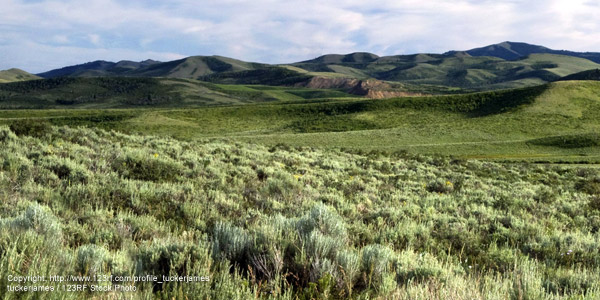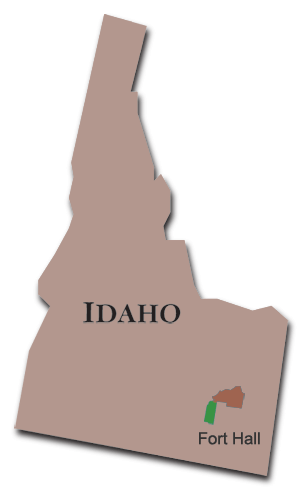Idaho: Fort Hall Reservation
About the Shoshone-Bannock Tribe, Ft. Hall: The Shoshone and Bannock Indians lived for hundreds of years in the areas of Wyoming, Utah, Nevada, and Idaho. When horses were introduced to the area in the early 1700’s, the Shoshone and Bannock peoples were able to travel vast distances to hunt many types of game to feed their families. The Shoshone, Paiutes, and Bannocks are related linguistically to the term Neme which means “the People”. Prior to contact with white settlers, these tribes formed small extended-family groups that traveled as semi-nomadic hunter-gatherers in order to survive in the harsh Great Basin desert.

History of the Ft. Hall Reservation: The Reservation was established by the Treaty of July 2, 1863, which was signed at Fort Bridger, Utah. A United States Executive Order, in July of 1867, set apart separate reservation lands for the Boise and Bruneau Bands of the Shoshone and Bannock Indian Tribes. The reservation’s original 1,800,000 acres were reduced to 1,336,000 acres in 1869. The size of the reservation was further reduced in 1900 when additional land was ceded to the US Government which left only the existing 540,764 acres within the Reservation. In addition, between 1885 and 1914, the reservation land was divided into allotments of 160 acres for each adult and 80 acres for each child. In April 1937, under the Indian Reorganization Act, The Shoshone-Bannock Tribes, Inc. became a federally chartered corporation. On April 30, 1936, the tribe’s Tribal Constitution and By-laws were adopted.
Life on the Reservation: The Fort Hall Reservation is located on the Snake River in southeastern Idaho. The reservation's name comes from a trading post that was built on the lands where the tribe spent winters near the Snake River in the early 1800s. Today the Shoshone-Bannock Tribe depends on revenues from agriculture, gaming, tourism and other small business. These businesses have not brought economic security to all tribal members, however, as unemployment is quite common among reservation residents. As a result, many tribal members live at or below the national poverty level.
Ft. Hall on the Map: Southeastern Idaho
